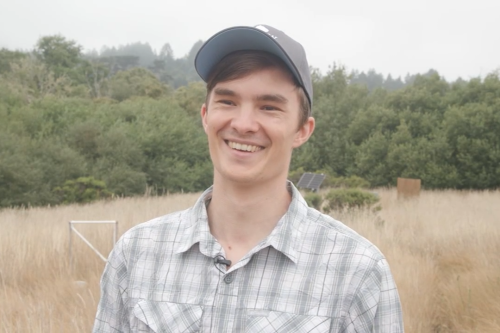The San Francisco Bay Area is home to over 7 million people who enjoy a Mediterranean climate with mild, wet winters and sun-drenched summers. Only about 2% of the planet has a similar environment. But the weather here is changing. Under high-emission scenarios, the annual mean temperature in the Bay Area could increase by 4.4 degrees Fahrenheit by 2050. Indications show that a rise in temperature will impact weather, including fog.
In an interview with ABC7 News, Paul Seibert, an Environmental Engineering Ph.D. student, commented on the potential impacts of reduced fog on vegetation in the San Francisco Bay Area. He collaborated with his advisor, CEE Professor Cynthia Gerlein-Safdi, and the Berkeley Lab Earth and Environmental Sciences Area (EESA) for their research in Point Reyes.
Under high emission scenarios, the annual mean temperature could increase by 7.2 degrees by 2100. However, fog has been declining since the early 1950s. From 1950 to the present, the Bay Area lost about three hours of fog per day during the foggy season from May to October.
In the interview, Seibert explained his research project involving fog collectors, saying, "So, I'm looking at the plant water usage, specifically attributing where they get water from. Most of the time, we assume that the majority of the water that plants use comes from rain. We assume plants are healthy when there's rain, and when there's not, plants are water-stressed. But we live in a unique climate with this distinct rainy season between October and roughly the middle of May or so. Right after this period, it's followed by a time where there's no rain but a lot of fog. "
Plants have little pores called stomata that open and close based on environmental conditions such as temperature, relative humidity, and light. The stomata are usually closed at night, so they don't take in any water. But sometimes, when there's a lot of fog, they open a bit. They tend to use fog as a water source when there's a lot of fog and little groundwater.
Seibert goes on to express interest in seeing the impact of reduced fog on the San Francisco Bay Area vegetation. He asks, "As the rain decreases and fog starts to come in, are they getting 30% or 50% of their water overnight from fog?"
It's not just Northern California that experiences less fog; it's been declining globally, from Chile to the coast of West Africa.
"I don't think people want to see it disappear, you know? I think most people at least enjoy it unless they want more sun. You can go to SoCal if you want then," said Seibert.

